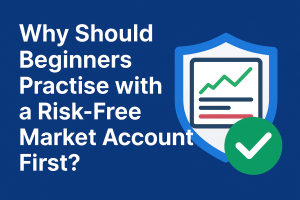Best Forex signals are alerts or indicators that provide traders with information about potential trading opportunities in the foreign exchange market. Various sources can generate these signals, including human analysts, algorithms, or trading software. When used effectively, forex signals can be a valuable tool in a trader’s arsenal, helping to identify potentially profitable trades and improve the overall effectiveness of a trading strategy. In this article, we’ll explore the role of Best forex signals in a trading strategy, including how they work, the types of signals available, and the pros and cons of using them. We’ll also discuss how to integrate forex signals into a trading strategy and the importance of balancing their use with your analysis and judgment.
What are Forex Signals?
Forex signals can be used by various traders, from beginners to experienced professionals, to supplement their own analysis and make more informed trading decisions. However, it’s important to note that forex signals are not a guarantee of profits. Traders should always exercise caution and do their due diligence before entering any trade based on a signal.
Top of Form
How Do Forex Signals Work?
Forex signals can be generated and delivered to traders in a few different ways. Some forex signal providers use human analysts who monitor market conditions and use their expertise and judgment to generate signals based on their analysis of technical and fundamental factors. Other signal providers use algorithms or trading software to automatically analyze market data and generate signals based on predetermined criteria.
Once a forex signal has been generated, it is typically delivered to traders through various channels, such as email, SMS, or a dedicated website or app. Some signal providers may also offer additional features, such as real-time alerts, social media integration, or the ability to copy trades automatically.
It’s important to note that the effectiveness of any given forex signal will depend on a variety of factors, including the signal provider’s reputation and experience, the accuracy and quality of the signals, and the trader’s risk tolerance and trading style. Traders should carefully evaluate the performance of any signal provider before committing to a subscription or using the signals in their trading.
Types of Forex Signals,
Traders can use several types of forex signals in their trading strategies. Some of the most common types of forex signals include:
- Fundamental Analysis Signals: These signals are based on analyzing economic and political events and trends affecting currency prices. Fundamental analysis signals may focus on factors such as interest rates, inflation, unemployment, and political stability.
- Technical Analysis Signals: These signals are based on analyzing historical price and volume data using chart patterns, indicators, and trend lines. Technical analysis signals may identify potential support and resistance levels, trend direction, and potential entry and exit points.
- RoboForex CopyFX Signals: CopyFX is a service offered by the broker RoboForex that allows traders to copy the trades of other successful traders. Traders can either follow a particular trader’s signals or become signal providers and have their trades copied by others. CopyFX signals are generated by the traders being followed and can be based on either fundamental or technical analysis.
- Algorithmic Signals: These signals are generated by algorithms or trading software that automatically analyze market data and generate signals based on predetermined criteria. Algorithmic signals can be based on a variety of factors, including technical analysis, machine learning, and artificial intelligence.
Advantages and Disadvantages of Using Forex Signals
Like any trading tool, forex signals have advantages and disadvantages that traders should consider before using in their trading strategies. Some potential benefits of using forex signals include the following:
- Time Savings: Forex signals can save traders time and effort by providing them with pre-vetted trading opportunities, allowing them to focus on other aspects of their trading strategy.
- Increased Confidence: Forex signals can help traders feel more confident in their trades by providing additional analysis and validation of their analysis.
- Diversification: By following multiple signal providers or using a service like RoboForex CopyFX, traders can diversify their portfolios and potentially reduce risk.
- Learning Opportunities: By following experienced signal providers, traders can learn from their strategies and analysis techniques and improve their skills over time.
However, there are also some potential drawbacks to using forex signals, including:
- Dependence on Signal Provider: Traders who rely too heavily on forex signals may become overly dependent on the signal provider and may need more confidence or skills to make their own trading decisions.
- Cost: Some forex signal providers charge subscription fees for their services, which can be a high cost for traders who are just starting or have limited capital.
- Quality and Accuracy: Not all forex signals are created equal; some may be lower quality or less accurate than others. This can lead to losses for traders who blindly follow these signals.
- Risk of Fraud: As with any online service, there is a risk of encountering fraudulent signal providers who may be more interested in making a profit than helping traders succeed.
Overall, it’s important for traders to carefully evaluate the advantages and disadvantages of using forex signals and to choose a reputable signal provider that aligns with their trading goals and risk tolerance.
How to Integrate Forex Signals into Your Trading Strategy
There are a few critical steps that traders can follow to integrate forex signals into their trading strategy:
- Set clear trading goals and objectives: Before using forex signals, traders need to clearly understand what they hope to achieve with their trading and how forex signals fit into their overall strategy. This can help traders choose the right signals and use them in a way that aligns with their goals.
- Identify your risk tolerance and trading style: Different traders have different risk tolerances and preferred trading styles, which can influence the types of signals most suitable for them. For example, traders with a conservative risk tolerance may prefer signals with a higher probability of success but potentially lower profits. In contrast, traders with a higher risk tolerance may be willing to take on more risk in exchange for the potential for higher returns.
- Choose a reputable signal provider: Many forex signal providers are available, but not all are reputable or reliable. Traders must do their due diligence and research potential signal providers before committing to a subscription or using their signals. This can include evaluating their track record, reputation, and the quality and accuracy of their signals.
- Test and evaluate the signals: Once traders have chosen a signal provider, it’s a good idea to test and assess the signs before using them in live trades. This can be done by backtesting the signals on historical data or using a demo account to test the movements in a simulated trading environment.
- Combine forex signals with other analysis techniques: Forex signals should not be used in isolation but as one tool in a trader’s overall analysis and decision-making process. Traders should also consider incorporating other analysis techniques, such as fundamental and technical analysis, to inform their trades further.
Conclusion
Forex signals can be helpful for traders looking to supplement their analysis and make more informed trading decisions. However, it’s important for traders to carefully evaluate the pros and cons of using forex signals and to choose a reputable signal provider that aligns with their trading goals and risk tolerance. To maximize the value of forex signals in their trading, traders should also set clear trading goals and objectives, identify their risk tolerance and trading style, test and evaluate the signals, and combine them with other analysis techniques. By following these best practices, traders can effectively integrate forex signals into their trading strategy and improve the overall effectiveness of their trades.





